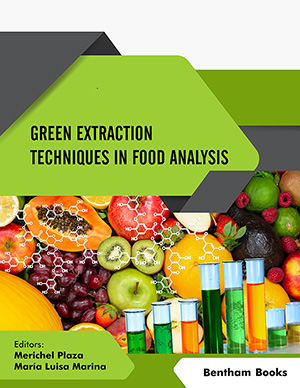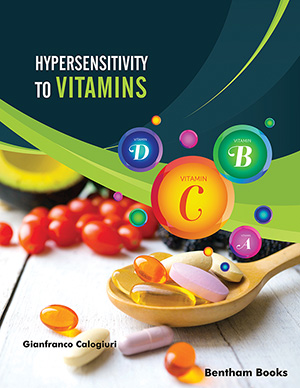Abstract
Breast cancer (BC) is the most frequently diagnosed type of cancer and the leading cause of cancer deaths in women worldwide. A number of established risk factors for BC have been identified in many previous studies which included age, reproductive history, lactation, hormone levels or use, genetic factors, breast density and various diet and lifestyle factors. Several previous studies highlighted the independent effect of dietary patterns, lifestyle factors, macro- and micronutrients intake, physical activity, tobacco smoking, and weight gain on the risk BC. Although a number of risk factors have been identified for BC, however, some are difficult to modify such as genetic factors, while dietary pattern, physical activity, nutrient intake and smoking are modifiable risk factors which could be targeted to reduce the risk of this devastating disease. Even though there is a quick advancement in BC cancer therapy, but still, the survival rate is not increasing. Therefore, preventing cancer development is more important than treating or inhibiting its progression and such prevention can reduce the suffering and pain of patients and their families.
Keywords: Breast cancer, diet, lifestyle, macronutrient, micronutrients, physical activity.
[http://dx.doi.org/10.1111/nure.12083] [PMID: 24330083]
[http://dx.doi.org/10.3322/caac.21262] [PMID: 25651787]
[http://dx.doi.org/10.1016/j.ajpath.2013.08.002]
[http://dx.doi.org/10.4178/epih.e2019010] [PMID: 30999736]
[http://dx.doi.org/10.3332/ecancer.2015.557] [PMID: 26284121]
[http://dx.doi.org/10.1093/jnci/dju068] [PMID: 24718872]
[http://dx.doi.org/10.7314/APJCP.2015.16.17.7473] [PMID: 26625747]
[http://dx.doi.org/10.1007/s10549-015-3353-z] [PMID: 25809092]
[http://dx.doi.org/10.1002/cncr.29552] [PMID: 26193782]
[http://dx.doi.org/10.1007/s12282-015-0638-3] [PMID: 26350490]
[http://dx.doi.org/10.1155/2015/140196] [PMID: 25866757]
[http://dx.doi.org/10.1001/jamaoncol.2015.1546] [PMID: 26182172]
[http://dx.doi.org/10.1007/s10549-014-3211-4] [PMID: 25414027]
[http://dx.doi.org/10.1007/s10549-012-2396-7] [PMID: 23274845]
[http://dx.doi.org/10.1158/1940-6207.CAPR-13-0258] [PMID: 24403289]
[http://dx.doi.org/10.1136/bmj.i3857] [PMID: 27510511]
[http://dx.doi.org/10.1123/jpah.2011-0316] [PMID: 23416687]
[http://dx.doi.org/10.1002/ijc.29272] [PMID: 25335465]
[http://dx.doi.org/10.1038/bjc.2014.132] [PMID: 24642621]
[http://dx.doi.org/10.1002/ijc.28508] [PMID: 24590452]
[http://dx.doi.org/10.1371/journal.pone.0125894]
[http://dx.doi.org/10.1038/s41598-019-41550-1] [PMID: 30926844]
[http://dx.doi.org/10.1002/ijc.29315] [PMID: 25379993]
[http://dx.doi.org/10.1089/bfm.2014.0141] [PMID: 25785349]
[http://dx.doi.org/10.1093/annonc/mdv379] [PMID: 26504151]
[http://dx.doi.org/10.1186/1756-0500-7-216]
[http://dx.doi.org/10.1038/ejcn.2014.135] [PMID: 25052230]
[http://dx.doi.org/10.3945/ajcn.113.061184] [PMID: 24108781]
[http://dx.doi.org/10.1186/1471-2407-12-113] [PMID: 22443862]
[http://dx.doi.org/10.1017/S1368980013001018] [PMID: 23651876]
[http://dx.doi.org/10.1038/bjc.2014.434] [PMID: 25101568]
[http://dx.doi.org/10.1158/1055-9965.EPI-10-1036] [PMID: 21335508]
[http://dx.doi.org/10.1093/nutrit/nux012] [PMID: 28969358]
[http://dx.doi.org/10.1017/S0007114516000751] [PMID: 26987270]
[http://dx.doi.org/10.1080/07315724.2014.963899] [PMID: 25915188]
[http://dx.doi.org/10.7314/APJCP.2014.15.14.5959] [PMID: 25081729]
[http://dx.doi.org/10.1038/nrc1408] [PMID: 15286738]
[http://dx.doi.org/10.1016/j.ejca.2016.07.022] [PMID: 27573429]
[http://dx.doi.org/10.3945/ajcn.111.026724] [PMID: 22760570]
[http://dx.doi.org/10.3945/ajcn.112.034025] [PMID: 23269820]
[http://dx.doi.org/10.1542/peds.2015-1226] [PMID: 26908709]
[http://dx.doi.org/10.1093/ije/31.1.78] [PMID: 11914299]
[http://dx.doi.org/10.1007/s10549-014-2895-9] [PMID: 24715379]
[http://dx.doi.org/10.1007/s10549-014-2953-3] [PMID: 24737167]
[http://dx.doi.org/10.1093/ije/29.1.20] [PMID: 10750599]
[http://dx.doi.org/10.1038/sj.bjc.6601314] [PMID: 14583769]
[http://dx.doi.org/10.1158/1940-6207.CAPR-11-0260] [PMID: 22166249]
[http://dx.doi.org/10.3934/molsci.2017.3.252]
[PMID: 25503112]
[http://dx.doi.org/10.1093/aje/kwn069] [PMID: 18390841]
[http://dx.doi.org/10.1056/NEJM199602083340603] [PMID: 8538706]
[PMID: 9307282]
[http://dx.doi.org/10.1001/jama.295.6.629] [PMID: 16467232]
[http://dx.doi.org/10.1023/A:1021922917489] [PMID: 12588084]
[http://dx.doi.org/10.1080/01635581.2012.718033] [PMID: 23137008]
[http://dx.doi.org/10.1002/ijc.29938] [PMID: 26595162]
[http://dx.doi.org/10.1007/s12609-018-0264-0] [PMID: 30662586]
[http://dx.doi.org/10.1056/NEJMcibr1315176] [PMID: 24499217]
[http://dx.doi.org/10.1016/j.tem.2014.10.001] [PMID: 25458418]
[http://dx.doi.org/10.3945/ajcn.114.101659] [PMID: 26791185]
[http://dx.doi.org/10.1016/0002-9343(94)90292-5] [PMID: 8085584]
[http://dx.doi.org/10.1007/s10549-009-0444-8] [PMID: 19565333]
[http://dx.doi.org/10.1002/ijc.28172] [PMID: 23526380]
[http://dx.doi.org/10.3389/fphys.2014.00213] [PMID: 24982636]
[http://dx.doi.org/10.1016/S0027-5107(01)00070-7] [PMID: 11295149]
[http://dx.doi.org/10.1016/S0955-2863(98)00074-6]
[http://dx.doi.org/10.1093/jnci/djk006] [PMID: 17202114]
[http://dx.doi.org/10.1186/2049-3002-1-16] [PMID: 24280319]
[http://dx.doi.org/10.1038/sj.bjc.6604540] [PMID: 18665162]






















